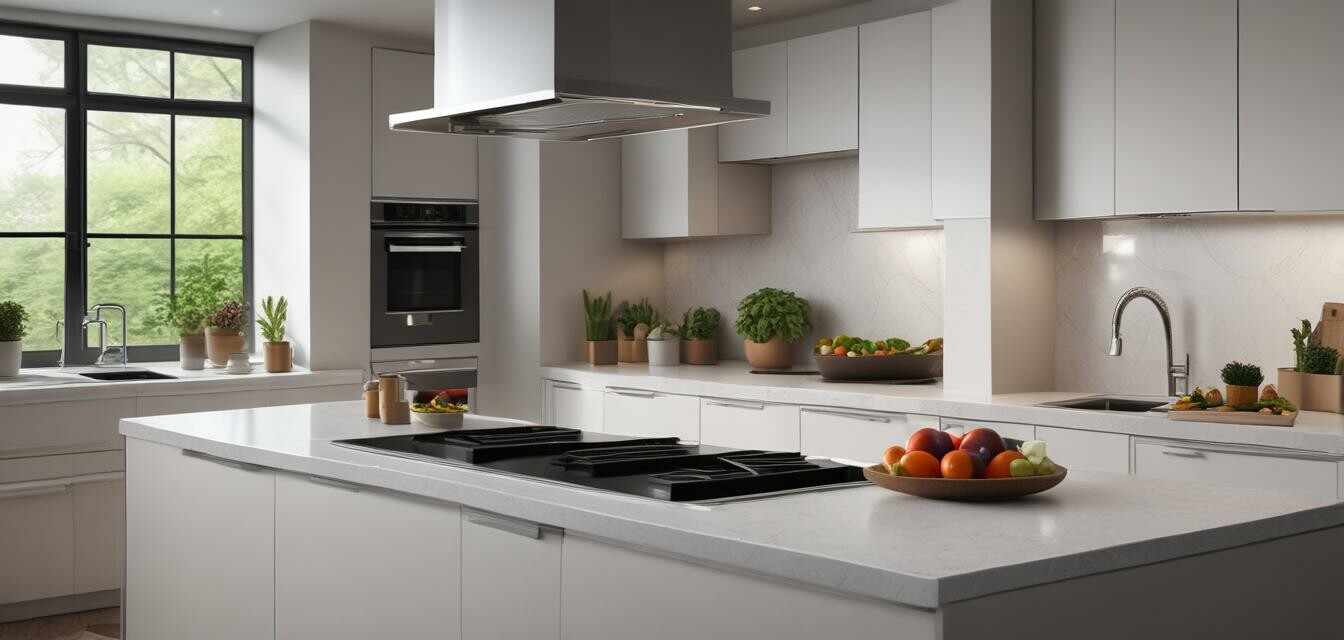
Perfecting sautéing and stir-frying with smart appliances
Key Takeaways
- Smart appliances enhance the cooking experience for sautéing and stir-frying.
- Temperature control is crucial for effective cooking.
- Using advanced features can save time and improve meal quality.
- Incorporating smart tools can help streamline clean-up and maintenance.
- Experimenting with different recipes can lead to culinary creativity.
Cooking with smart appliances can transform your sautéing and stir-frying skills into art. These innovative tools not only improve efficiency but also bring out the flavor in your ingredients. In this article, we'll guide you through mastering both techniques while utilizing the advanced features offered by your kitchen devices.
Understanding sautéing and stir-frying
Sautéing and stir-frying are both quick cooking methods that utilize high heat, making them perfect for preparing delicious meals in a time-efficient way. However, there are key differences between the two.
| Aspect | Sautéing | Stir-Frying |
|---|---|---|
| Cooking Vessel | Usually a frying pan or skillet | Wok or deep frying pan |
| Heat Level | Medium to medium-high heat | High heat |
| Cooking Time | Short bursts | Very quick |
| Amount of Oil | Moderate | Generous |
Smart appliances that enhance sautéing and stir-frying
When it comes to sautéing and stir-frying, the right appliances can make a significant difference. Let's explore some of the high-tech kitchen appliances that can elevate your cooking experience:
- Smart Ovens: These allow for precise temperature control that ensures even cooking.
- Induction Cooktops: They heat up quickly and give you better control over cooking temperatures.
- Smart Pressure Cookers: Ideal for quick meals, these can sauté, stir-fry, and pressure cook, making meal prep simpler.
- Woks with Smart Features: Some modern woks incorporate temperature control and timers for perfect stir-frying.
Tips for perfect sautéing and stir-frying
Beginner’s tips
- Preheat your smart oven or induction cooktop before adding ingredients.
- Cut your vegetables uniformly to ensure even cooking.
- Don’t overcrowd the pan, as it can lead to steaming instead of sautéing.
- Use a variety of colors and textures to make your dish visually appealing.
- Practice timing; ingredients like garlic need less cooking time than harder vegetables.
Techniques to master
When using smart appliances, technique is key. Here are some advanced techniques to try:
- Deglazing: After sautéing, add a splash of wine or broth to the pan to lift the flavorful bits from the bottom.
- Flambéing: Use this technique to add depth and a dramatic flair to your stir-fry, if comfortable.
- Layering Flavors: Start with aromatics such as garlic and onions, then add other ingredients to build complexity in your dish.
Maintaining your smart appliances
To ensure your smart appliances work efficiently over time, proper maintenance is essential:
| Appliance | Maintenance Tips |
|---|---|
| Smart Ovens | Regularly clean after use to avoid buildup and ensure accurate temperature readings. |
| Induction Cooktops | Wipe spills immediately to prevent damage. Use cookware compatible with induction. |
| Smart Pressure Cookers | Check sealing rings regularly for wear and tears. Follow guidelines for cleaning valves. |
| Woks | Season your wok to maintain its non-stick surface. Clean promptly to avoid rust. |
As you become more comfortable with using your smart appliances for sautéing and stir-frying, don’t hesitate to explore new recipes. For ideas on efficient kitchen appliances, check out our section on Energy-Efficient Appliances. If you’re curious about Bluetooth-enabled devices that can assist in cooking, visit our page on Bluetooth-Enabled Devices.
Conclusion
Perfecting sautéing and stir-frying with smart appliances is an exciting journey into the world of culinary arts. With the right techniques, needed care for your appliances, and exploration of unique recipes, you can elevate your everyday cooking into a flavorsome experience. Embrace the modern tools available and watch your skills flourish!